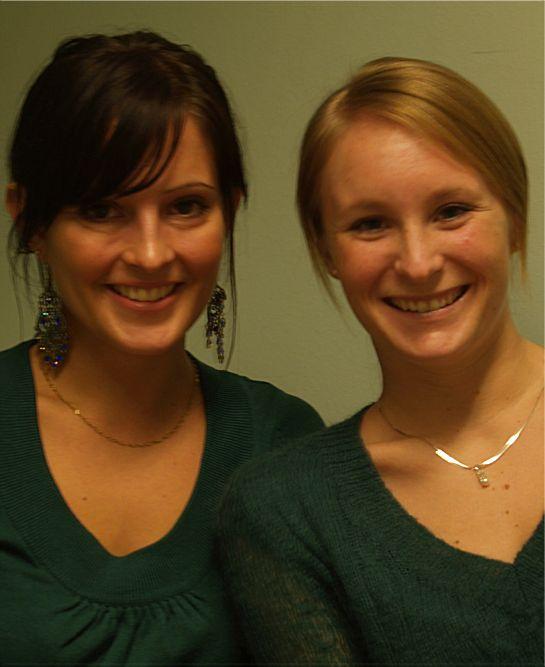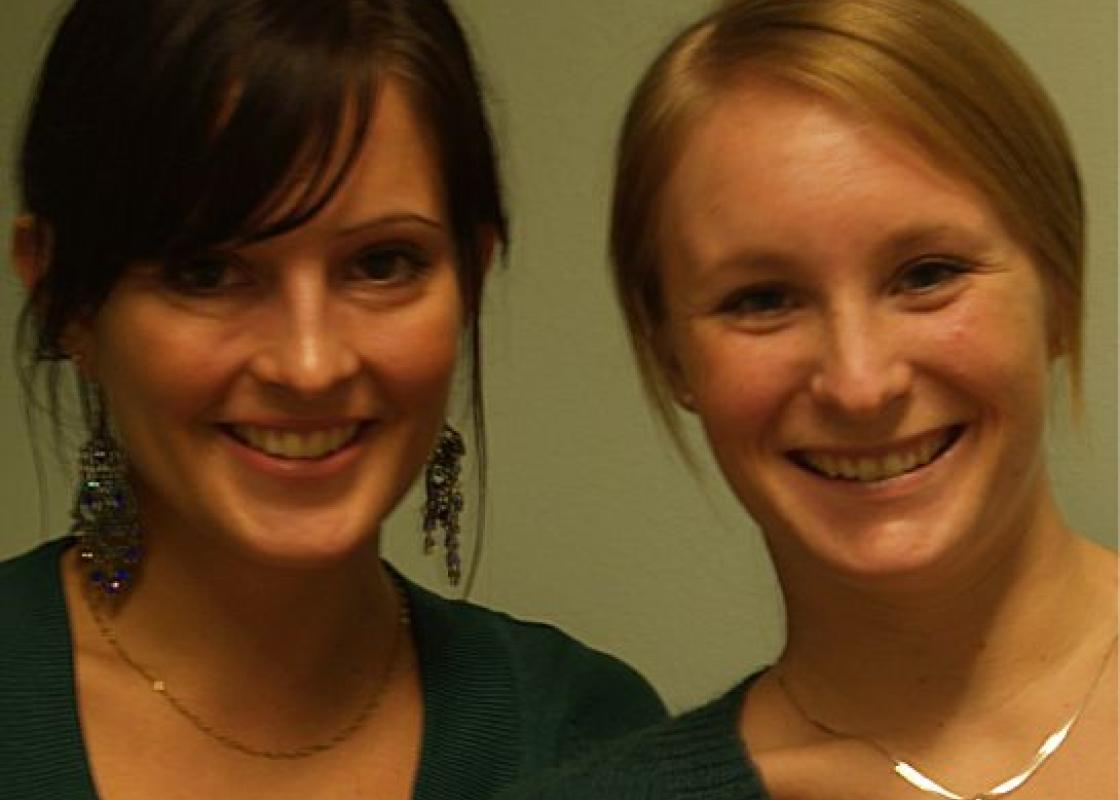
Eating disorders are the most common psychiatric illness among women in the western world. However, psychology has gained little knowledge of anorexia, say Karen Klovning and Siri Hoftun. They therefore chose anorexia as their theme in a collaborative thesis submitted as part of their professional studies in psychology at the University of Bergen, Norway.
The two students conducted in-depth interviews with eight girls between the ages of 19 and 26 who have had anorexia – and discussed their experiences with the disease and how they developed it. The eight girls come from all over Norway and they each developed anorexia as a teenager. According to diagnostic criteria none of them are ill any more.
– Nevertheless they still felt marked by the illness, and had difficulty in defining what it meant to be free of anorexia, Klovning and Hoftun explain. The girls were recruited to the project through notices and requests aimed at students at the University of Bergen.
Hunting for meaning
– Seen from the outside anorexia seems to be quite irrational. Yet the women we interviewed are strong and purposeful, and in our opinion it is important to listen to their stories and to understand what explanations they give for their illness in order to treat and help them, emphasizes Karen Klovning. – Instead of looking at anorexia as something the girls are victims of, our starting point was to consider the girls as agents and to understand how they developed the illness.

There is a general impression, within psychology too, that anorexia has cultural explanations.
These are explanations that Hoftun and Klovning wish to expand upon. – No one seems to be able to say what the connections are between culture and anorexia. Or one is satisfied with making reference to adverts, films and posters showing skinny models. However, there is no direct link between fashion pictures and the girls who develop eating disorders, Hoftun points out.
– Culture is not simply something from outside that just befalls the individual. It is also something which the individual interprets and within which she acts. It’s not exactly clear what thinness means for an anorexic, or how the dominant ideal of thinness becomes a part of a woman’s experience, of their construction of meaning and understanding.
A way of managing the unmanageable
– Those with anorexia use their bodies in an extreme manner in order to display or deal with something. All the girls we interviewed, either before or at the time they developed anorexia, had experienced difficulties with which they did not know how to deal, Klovning explains.
The difficulties were connected to central themes in the lives of the girls, and created what Klovning and Hoftun call dilemmas. The dilemmas came to light in the girls’ histories. This has to do with, among other things, the absence of stability in their lives, while it is also expected that the girls will overcome the instability. What about a feeling of not belonging: Should one be like other people or like oneself? This concerns the absence of unconditional love and the struggle to create a stable identity in an unstable existence.
Hoftun and Klovning are surprised by how similar many of the girls’ stories are. They report unstable family situations: Moving, divorce, conflicts with parents, and parents with psychological problems. Several of the girls tell of many tasks and responsibilities at home, and periods when they were as parents to their own parents. “Celin” says, “Daddy has been very sad, and I feel that I almost take on the role of parent – constantly in relation to Mum, and once in a while in relation to Daddy. It’s pretty hard actually.”
– It is as if the girls have focused on managing and overcoming in order to redress their unstable situations at home, Hoftun says. Klovning follows up: – One’s environment is difficult to control. Anorexia becomes a “choice” and a solution. Controlling food intake and becoming thin is a way of controlling and overcoming. If everything is chaos they have at least control over this.
“Hanne” recounts: “I didn’t quite know what was going on at home, and so much was happening that I felt I had to gain control over something in some way.”
The girls’ struggles are directed at pleasing others. – They lack unconditional love: The belief that they have worth just in being who they are. Support and assurance from their surroundings that they are valuable as people is absent or is not clear enough. Consequently, they need to achieve and prove themselves worthy of love. They feel that they haven’t been noticed for what they are but for what they achieve, Klovning says.
Several of the girls also recall not belonging to a specific circle of friends. They struggle with finding out where they belong and who they are. “Celin” says she was “a lost sheep in a big forest”. “Anne” searched for something that would tell her who she was.
Thin is happy, fat is immoral
Klovning and Hoftun believe that our late-modern Western culture contributes to making anorexia, in particular, “chosen” as a solution. – The girls have models for dieting behaviour. Moreover, they may have parents who diet, and who have contributed to the attention given to weight. This is not necessarily in the form of a conscious pressure to diet, but that the parents are preoccupied with what they eat – without reflecting on how this focus influences a teenage daughter, says Hoftun.
For some of the young women other people’s comments have contributed to their decision to diet. – This might be a pat on the backside accompanied by some remark. Someone may have remarked, “you have become so pretty and slim”, or some other, in itself, innocent comment. However, this leads to teenage girls becoming conscious of their body in a different manner than previously, and they can begin to have negative thoughts about it.

However, when there is so much attention around slimming this is something that most of us just live with. What is it that causes these women, in particular, to become ill? – It is partly about character traits, such as perfectionism, Hoftun says. – For these women it isn’t only about being thin, as one should be according to the ideals of beauty. It’s also that thin equals control and happiness. The word fat is negatively loaded, and from it follows that you are lazy – yes, almost immoral. And therefore, something you do not want to be associated with, Klovning adds.
Social acceptance and the praise that comes with being thinner is important. As “Frida” says, “It works!”
– Even though being too thin attracts negative attention, it also feels good to be so. As they are at least not too fat, Klovning says. – If it’s a choice between anorexia and obesity they will definitely choose the former.
A choice that takes away the pain
But is anorexia something the girls really choose? – Some of the women describe anorexia as a choice, Klovning explains. In one example anorexia is described as a way of gaining attention. Another talks of “the little anorexia”, and is convinced that she will not become actually ill, but maintains the control that is so important. – Others begin to slim but then lose control. Becoming continually thinner is a kind of intoxication, and they lose control of their control, Klovning says.
They have then reached a stage where their whole existence revolves around slimming and food.
– It’s as if they live in a bubble. Everything that is difficult – friends, parents, absence of approval – is no longer important and therefore no longer painful. Hunger is all they feel, Hoftun explains.
And when they try to start eating again everything they have suppressed floods to the surface again. –Anorexia is therefore very difficult to treat, and this is why it is important to look beyond the symptoms, the criteria for diagnosis and character traits, and find the dilemmas that lay behind them and what anorexia is a solution to, says Karen Klovning.
Good enough?
The two psychology students are interested not only in what happens within the families but also in society and culture. They are interested in some of the distinctive features of our late-modern society: Individualism, the wealth of choices, to have oneself as a project and of being alone.
– Young people now know that identity is something that they will shape and master. The reverse side of this can be a powerlessness that is to do with not being good enough. They have to search for ways of becoming themselves. Anorexia and the control over one’s body is a way of at least winning back power over your own body, and a way of setting boundaries in relation to “the others”, say the students.
– Control is a value, and it is the individual who shall be in control. Everything depends upon you. But how do you actually know when you are good enough? Siri Hoftun asks.
Translated by Matthew Whiting KILDEN
Siri Hoftun is now a qualified psychologist and has began working at the special unit for eating disorders at Haukeland Hospital, in Bergen. Karen Klovning is in the final year of her psychology studies, and she works part-time as a milieu therapist, also at the special unit for eating disorders at Haukeland Hospital.
The Thesis: Kultursykdom eller syk kultur? En kulturpsykologisk studie av anoreksi og subjektiv meningsdannelse (Cultural illness or a sick culture? A cultural psychology study of anorexia and the subjective creation of meaning) was submitted as part of the professional program in psychology, at the Department of Psychology, the University of Bergen, Norway.
The illness is characterised by weight loss that is consciously brought about and maintained by the patient. The weight loss is brought on by the avoidance of "fattening food", by vomiting, by the use of laxatives, excessive exercise or the use of appetite suppressants. Another criteria for the diagnosis is a disturbed sense of one's own body shape or weight - in which the fear of becoming overweight persists as an insistent exaggerated thought.
Detailed descriptions of the medical phenomenon anorexia can be found going as far back as the seventeenth century - but under the expression "nervous consumption". The term "anorexia nervosa" was first used in 1873, but the illness was nevertheless described as a curiosity as late as the 1970s. Subsequently, the number of reported cases has increased dramatically. The illness came to be referred to as the psychiatric illness of the 1980s.
Eating disorders arise mostly in women between 15 and 40 years old, but also occurs in boys and young men. In a survey in Oslo, Norway, in 2001 psychologist Einar Kringlen found that anorexia nervosa and bulimia nervosa affect 3 per cent of women and 0.2 per cent of men at some time in their lives. It is, however, probable that that many people exhibit eating disorder behaviour without qualifying for the diagnosis. There are probably also sufferers who do not receive medical treatment and are therefore not in the statistics.
